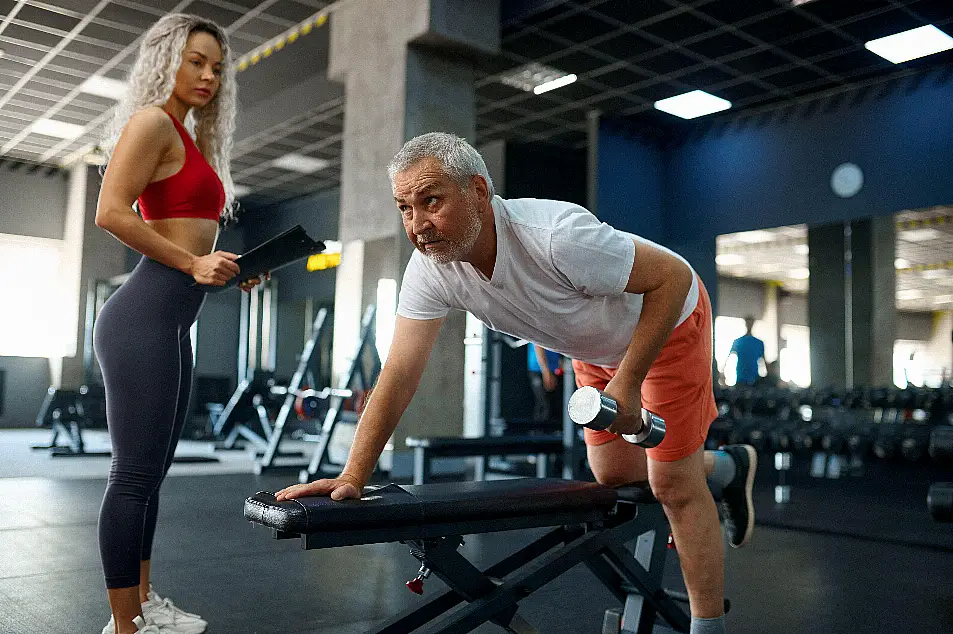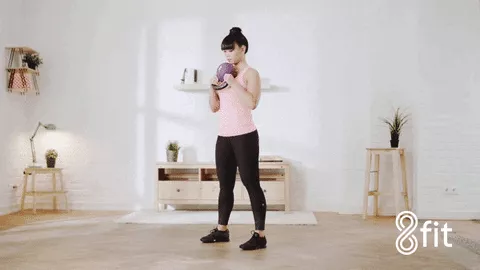If you feel like you’re in a bit of an exercise rut, you’re not alone.
After the huge explosion in fitness at the beginning of the pandemic – when logging onto live classes and jumping around our living rooms was the norm – returning to the gym was novelty at first.
But now, it might not feel as shiny and new as it once did. Plus, sometimes it’s just easier to go home and watch Netflix on the sofa.
If this sounds like you, a new type of exercise might help kickstart your routine. Enter: HIRT – high-intensity resistance training – the latest craze to help you feel fit and strong.
Here’s everything you need to know…
What is HIRT?
“HIRT matches the principles of HIIT training, by alternating short bursts of high-intensity training with shorter rest periods,” explains Shane Collins, founder of Circuit Society (circuitsociety.fit).
“The ‘resistance’ comes via the use of weights, which can include dumbbells, kettlebells, or any piece of strength training equipment.”
Collins says there’s a big difference between the two types of high-intensity workouts, saying HIIT has exercises that “tend to be more explosive, whereas with HIRT the intensity focuses on lifting heavier weights to achieve the desired high-intensity training effect”. This often means “exercises are carried out at a slower pace, with more control and less impact on the body”.
What are the potential benefits?
“Firstly, it’s a great way to train and avoid unnecessary impact on your joints,” says Collins. “There doesn’t have to be any ballistic movements – the body doesn’t need to enter flight mode and brace itself for landing again. This can be really helpful for people with joint or back problems – they can achieve the same training effect without the impact. In that sense, it can certainly help to reduce impact injuries.”
You might also reap the benefits long after your workout is over. Collins says: “Compared to cardio training – where the calorie burn really starts to reduce within 90 minutes of completing the session – with HIRT and strength training in general, the afterburn can last up to 48 hours. That means your body continues to burn more calories at a higher rate, even after you’ve finished your session.”
How accessible is it?

While you need a base level of movement to be able to lift weights and HIRT won’t be for everyone, Collins suggests it’s a good starting point to get into training, “As all you really need is a set of dumbbells, a good programme to follow and you can get going”.
He continues: “The key to starting any new fitness regime is to keep things simple. One of the benefits of HIRT is the simpler you keep things, the more effective it’s likely to be. People of all abilities can take part in the same workout, at the same time if they wish – the only difference is likely to be the level of resistance or weight they perform the exercises with.”
Anything to be careful of?

“HIRT isn’t entirely risk-free. Yes, it is low impact and the exercises are carried out with more control, but every time you increase the weight you use, you increase the risk of injury,” says Collins. “There’s nothing to worry about, as long as you have a well-structured plan and you focus on your form and technique, it’s a very low-risk way to train at high intensity.”
Consult your GP if you have any questions about a new workout and always be sure to take things easy, while also dedicating time to warming up your body before a session and cooling down afterwards.
Collins’ advice is to “master a small number of exercises to begin with” and “get good advice on form from your favourite trainer” if you’re able to.
What might a classic HIRT workout look like?
“There are lots of ways to train and still stay honest to HIRT principles,” says Collins. This is a classic HIRT workout he’s put together, using a circuit training format that will have you sweating for around 30 to 40 minutes:
Choose a medium to heavy set of dumbbells.
40 seconds of high-intensity work at each station.
20 seconds rest as you move between each station.
60 seconds rest once you have completed all six stations.
Repeat for two six laps of the circuit, depending on your training experience and fitness level.
Exercises:

Station 1: Dumbbell squats.

Station 2: Dumbbell bent over row.

Station 3: Dumbbell overhead alternating lunge.

Station 4: Dumbbell shoulder press.

Station 5: Dumbbell swings.
Station 6: Push-up to renegade row.







